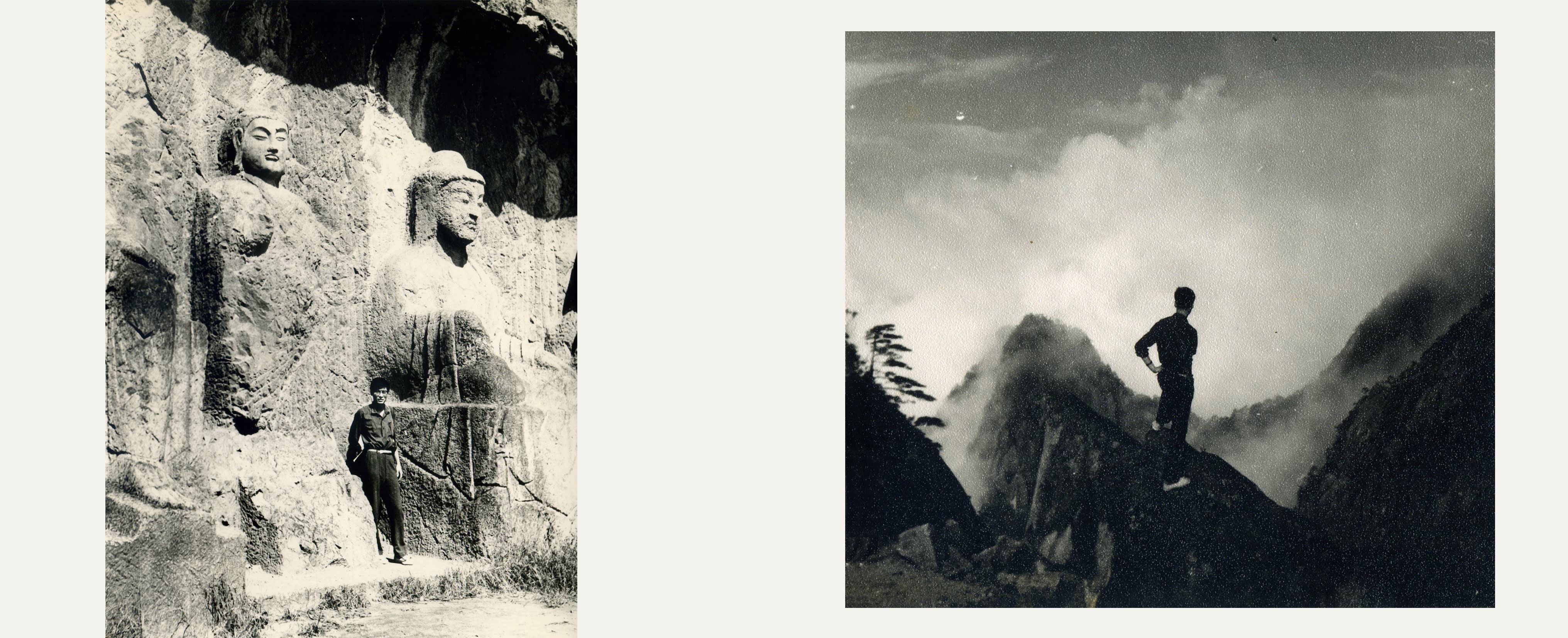"LANDSCAPE IS THE ENERGY INSIDE YOUR CHESTBEING RELEASED AS A PAINTING. IN CHINA WE SAY:OUTSIDE WE LEARN FROM NATURE,BUT INSIDE WE CREATE FROM OUR HEARTS."- LI HUAYI |
Li Huayi was born in 1948 in Shanghai, China. When he was six years old, Li learned the art of traditional ink painting with Wang Jimei in private. By 1964, at the age of sixteen, Li began his studies in Western art with Zhang Chongren, who had studied at the Belgian Royal Academy in Brussels and who was known for his realistic watercolors. During the Cultural Revolution (1966 - 1976), Li was exempted from being sent to the countryside and allowed to remain in Shanghai to paint Soviet-style propaganda murals as a result of his dexterity with brush and ink and his excellent training in Western art.
Since the 1970s, Li Huayi visited a number of China's significant scenic, historic and cultural sites. During this journey, Li visited the celebrated peaks of Huangshan in Anhui Province, which are often depicted in many of his paintings. In Gansu Province, Li taught himself the early history of Chinese painting and achieved an understanding of religious painting through informal study of the Buddhist cave temples at Dunhuang. In 1978, Li travelled to Beijing where he saw Northern Song landscape painting and major exhibition of modern Western art; both of which left him with deep and lasting impressions.

At Longmen (left), and in Huangshan (right) in the early 1970s
In 1982, Li Huayi and his wife immigrated to San Francisco. There, he enrolled at San Francisco's Academy of Art to study Western art and he completed his master's degree in 1984. In the same year, Li held his first one-man exhibition in America at the Pacific Asia Museum in Pasadena, featuring a combination of his Dunhuang-style paintings and his 'Abstract Expressionist' works. His abstract paintings particularly received critical acclaim from the leading scholar of Chinese painting, Michael Sullivan.
In the decades to follow, Li Huayi explored the prospects and boundaries of abstract painting combined with elements from early Chinese art. He gradually created his signature style in the early 1990s, which features grand mountain compositions that recall the monumental landscapes of the Northern Song Dynasty.
Throughout Li Huayi's artistic career, China's extraordinary landscape has been a primary source of artistic inspiration. Particularly during the 2000s, he made a number of pilgrimages to famous mountains in China including Huangshan Mountain in Anhui, Lushan in Jiangxi, Wuyishan in Fujian, Zhangjiajie in Hunan, and Huashan in Shanxi, as well as an exploration of Li Cheng's home territory in Shandong.

